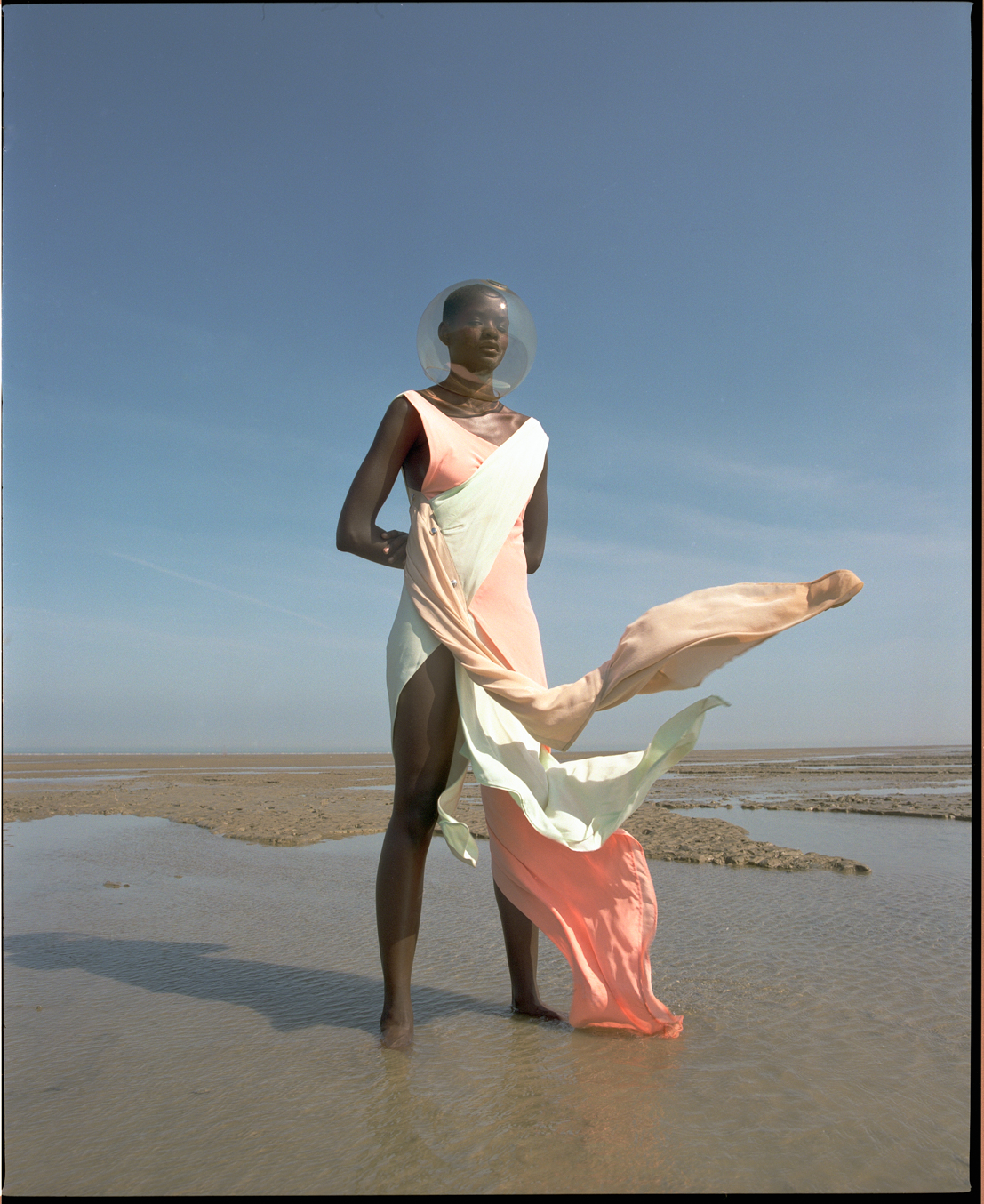O — How do you address it?
SL—Well,youtry.Youtrytobeasopeninthatwayas you can. The problem is that when you are selling around the world, which we are, there is a very, very extreme difference in body sizing when you go from East to West, up and down in the world. That is just a fact. So, your small is sometimes too small for some part and too big for another part of the world. There it gets very, very complicated. I wish I had an answer to that. We just kind of have to go with what we think is the style that might work better in that market, so let’s make it smaller. And then this one is better for this one, so let’s make that “small” bigger. But you’re always missing something. You have to be an H&M or a Zara and have that big of a collection, that big a volume, to really address every body shape. For us, that’s just not possible. But we try, and we make mistakes. Sometimes we’re successful and sometimes we’re not. I’m a customer myself. I may not be a woman, but I love fashion. I buy stuff. I wear things. I wear fashion. I spend money on it. I really feel disappointed when I try something on and it just doesn’t work on me. You can never 100% get rid of that because everybody is different, sizing is different. But I try to find a way where the experience of putting it on yourself is almost better than the fantasy of the model on a catwalk.
O — Your collection has drawn a lot of attention for your bold use of color, which is not a typical New York thing at all.
SL — As soon as people put it on, they feel differently about themselves. I think a lot of that has to do with the shape on one hand, but especially on color and material. As soon as you put a color on your body, it makes you feel different. What we’ve really noticed is that a lot of people are, all of a sudden, rejecting this idea of no color. As soon as they experience a Sies Marjan moment they’re like, “I never want to wear black again.” Or, “I never want to wear just beige, you know?” I think that’s something that takes time, but we are really getting these results. We are getting people that are like, “I never wore yellow, but your yellow works on me. Every time I wear it people come up to me and say, ‘Oh my god, what is this?’” I hear it all the time. I think that’s really great.
O — You grew up all over the world, with such a mix of cultures. Has your international upbringing influenced your design aesthetic or your vision?
SL — I don’t think it has directly influenced my design aesthetic, I never get inspired by places or by things, really. It’s really strange. It’s not like my childhood in Asia and Africa inspired me to make my collections. But it makes me who I am.Who I am is who I am as a designer, too. As an example, this flexibility and openness towards differences in culture, being very easy and adapting. I was born in that situation, for me that’s such a natural thing. I come somewhere, I analyze, I look around, and I’m like, OK this is what the culture is, this is where I’m going to have problems, this is where I can be. It takes me a week or two and then I can kind of adapt to that. It’s in my nature. That, translated to my work, is very much why I was able to adapt my drawings, for example. Because I adapt very quickly to new surroundings and new situations. In that way, it definitely shaped me.
O — You’ve had a great response from the fashion press for such a young brand. To what do you attribute this relatively swift rise in acclaim?
SL — As soon as you let go of the pressure of succeeding, it’s like relationships—as soon as you let go of wanting to be in a relationship, then it happens to you. That’s a little bit what happened with us as well. As soon as we let go and were like, without any religious thing about it, “Fate will guide us, the reality of now will take us wherever it needs to take us.” And that’s not something that we calculated.
O — And you’re embracing this whole American thing.
SL — Yeah, because I can watch an episode of Veep, which is highbrow, and then I can watch a shitty comedy. For me, there’s no high or low—it’s all one thing. There are so many T V shows that I love. It never directly inspires me, but I think there is something about exposing these worlds. It’s like traveling in a way. Especially with TV because there are thirteen hours of episodes and you see these characters, you see these storylines, you kind of feel what it’s like to live in, for example, Fargo...where is it?
O — It’s in North Dakota.
SL — Exactly. Or, you’re in Hollywood in the ‘60s, or ‘50s. You travel in a way, which is really incredible.
